
I've been fascinated with the idea of making my own cheese for years. While I make yogurt and yogurt cream cheese regularly, have tried my hand at kefir, and have even bought some rennet (which sadly expired in the fridge untouched), for some reason cheese seemed like a daunting dairy frontier.
Then last month I attended the Real Food Symposium here in Los Angeles, and after seeing a demonstration from the good folks at Mariposa Creamery on how to make goat cheese (a.k.a. chèvre), I finally got up my nerve to give it a go.
Guess what? Making goat cheese is SO EASY!
Why bother to make goat cheese at home?
Making your own goat cheese takes very little time or effort. Depending on your source of milk, you can also save quite a bit of money compared to artisan and local cheeses. I pay $30/gallon for local, raw goat milk which yields about a quart worth of cheese.
While I could buy decent goat cheese at the grocery store for cheaper, I love that my cheese is raw, crafted from local goat's milk, and the only ‘additives' are a bit of sea salt and possibly garden herbs of my choosing.
Beyond the cost, homemade goat cheese is absolutely divine to eat. Love soft, creamy, spreadable cheese? Drain your cheese for less time. Prefer dry, crumbly goat cheese? Let it hang for a full 24 hours.
Our herd share goat produces a very mild, non-goaty tasting milk, and as a result, my cheese is also mild. If you are lucky enough to have access to raw goat milk, your cheese will impart a flavor from your goat's pasture or feed, her breed, and the season. Real food goodness.

Homemade Goat Cheese Ingredients and Supplies
- 1 gallon raw goat milk (This recipe will work for pasteurized milk too, but I suggest avoiding all ultra-pasteurized dairy.)
- Mesophilic culture for cheese making, 1 pinch or 1 packet of Cultures for Health culture- find cheese cultures here
- Rennet, 3 drops – find it here
- 1/4 cup filtered water
- Large pot – big enough to hold the gallon of milk
- Large bowl – big enough to hold at least 3 quarts of liquid
- Thermometer
- Clean flour sack towels (layered cheese cloth will work too)
- 2 heavy duty rubber bands
- A good spot to hang your dripping cheese bundle
- Unrefined sea salt to taste – find high quality sea salt here
Homemade Goat Cheese Method
- Pour goat milk into non-aluminum pot and warm to 72 degrees Fahrenheit.
- Remove from heat and add cheese culture. Mix for about 20 strokes, taking care not scrape the bottom of the pot.
- Place 3 drops of liquid rennet into 1/4 cup of filtered water – add to warmed milk.
- Cover and allow to sit for 12 hours at room temperature.
- At 12 hours, check for a clean break – see this short video for a visual example.
- Line a large bowl with a clean flour sack towel.
- Gentle pour the contents of the pot (now curds and whey) into the towel-lined bowl.
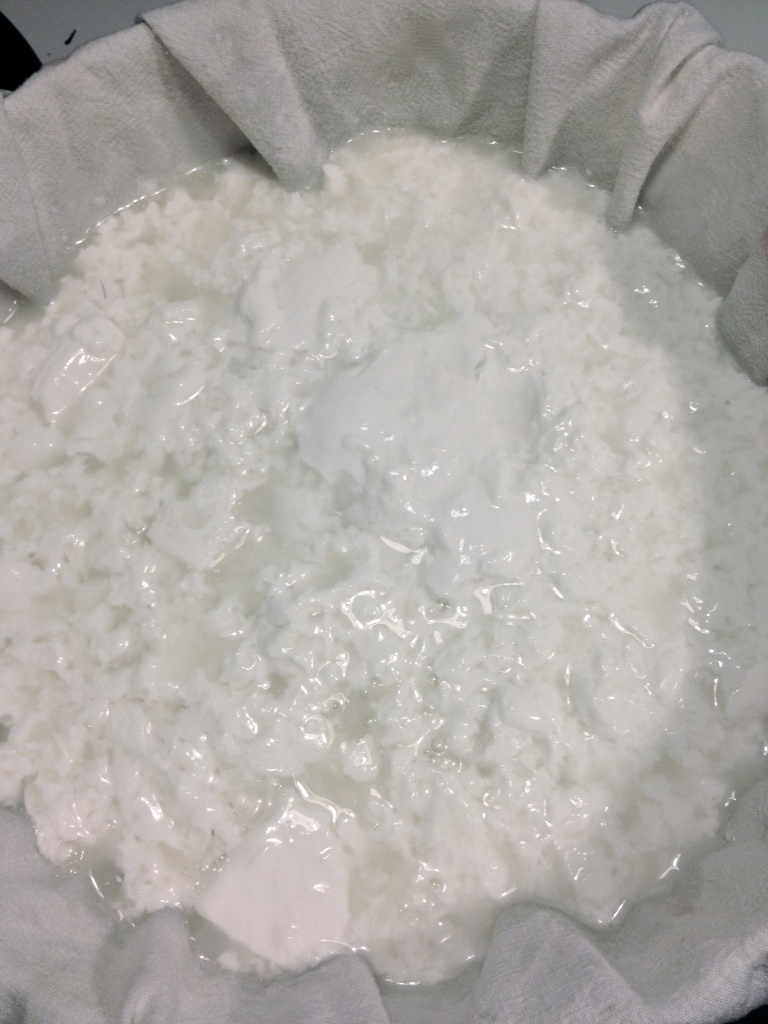
- Gather the corners of the towel and wrap both rubber bands around the gathered ends making a bundle.
- Hang the dripping cheese cloth over the large bowl from a kitchen cabinet or similar set-up. (The current solution in my kitchen is to hang dripping dairy products from a light fixture above my stove.)
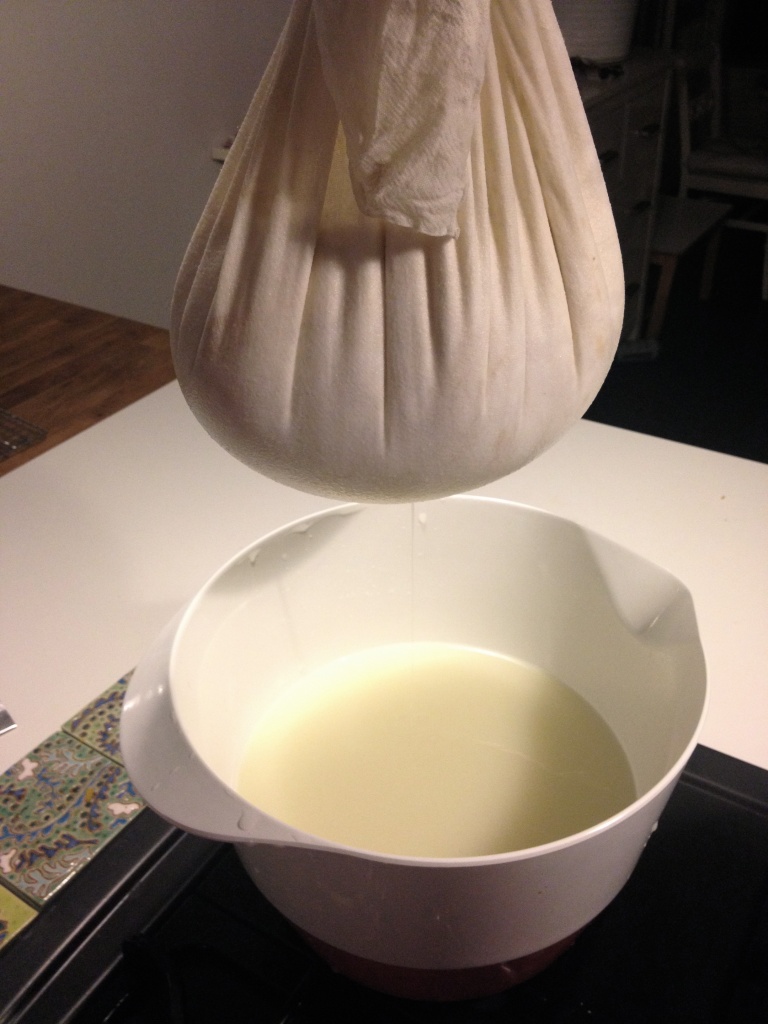
- Allow to drain for 6-24 hours depending on your desired consistency. I prefer 10-12 hours for a moist but crumbly cheese.
- Add sea salt to taste.
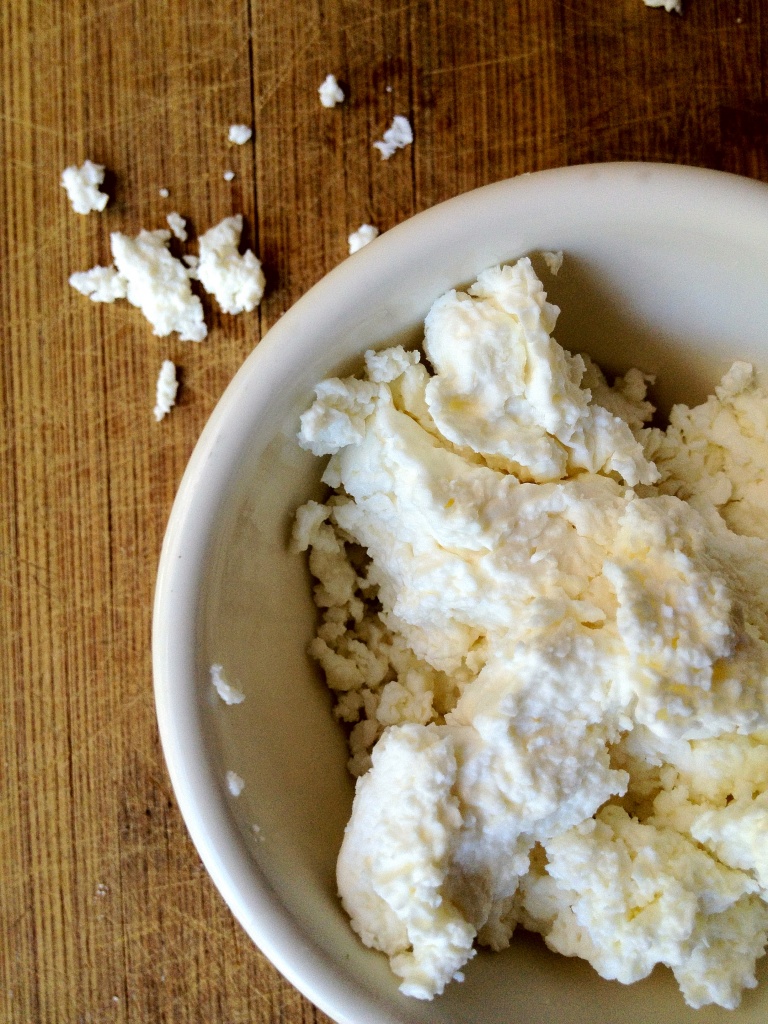


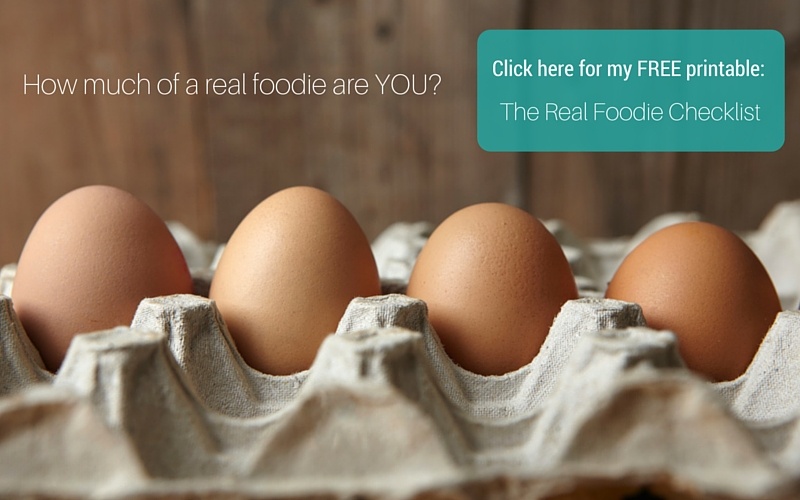

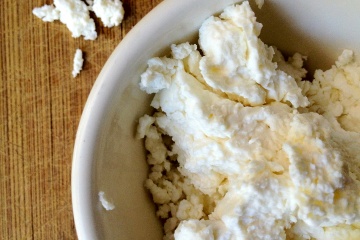
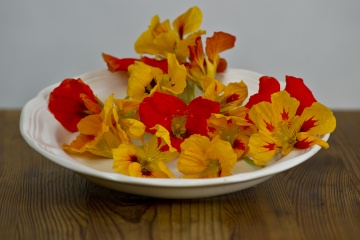





Thanks so much for this. It is exactly the kind of recipe with visuals that I’ve been searching for.
You’re welcome, Allyson!
Im so excited to try this. You cannot buy raw milk in NC, but I am close enough to SC that I should be able to get some there. My whole family loves goat cheese:) Thank you!
Thank you for de-mystifying the process! I’m in Australia and just starting to feel out where to find suppliers. Can you make this cheese with goats milk that’s been frozen? That’s how our local health food shop gets it in. Regards, Stpehanie
You can make it with frozen milk. When you thaw the milk, do it slowly, in the refrigerator. I use only 1/2 drop rennet for my Chevre, which I make with milk from my own goats. The result is a softer curd and a creamier cheese.
I had the pleasure of tasting this lovely cheese made by Emily Barlett herself. Whoa! so so yummy!
Awesome! Been wanting o make my own! How long does the goat cheese last?
Oh and how o you store it?
$30 a gallon? Whoa! That is insane! We get it here in Oklahoma for around 8. Of course, we have our own goats and i have not broken down the cost when you consider hay, but we get ours for free. This is next on my list to try!
I’m making a simple goat cheese for my first time today can I hang it in the fridge or oven to dry I’m worried about flys or other things getting on the flour sack ?
Hi Stephanie, thanks for the question. I would suggest the oven, rather than the fridge, as your cheese won’t culture in the cold.
As a goat cheese maker and farmer milking 60 goats a day and know many little helpful hints to making cheese, I would not use the oven either. The humidity from the oven can actually change the bitterness of your cheese and once you are stuck with that flavor there is no getting rid of it but through time and aging yet still leaving a small bitter after taste. It’s better to find a place where the humidity is low while the moisture of the cheese drips leaving whey in your bowl. If the humidity is up when I’m hanging my chèvre (the cheese you are making in the above provided recipie) then I will add a plug in fan NOT pointing directly at the cheese, but yet moving the air around so the humidity is not stale in the room. I set the fan on low and let the air move around. Environment can affect the outcome of your cheese and trust me when I say it will….it will !!!!!! Our goat cheese dairy plant has a temp controlled processing unit to make sure our cheeses always come out tasting relatively the same. Even with a environment control unit, sometimes it can slightly change the outcome, hence needing a fan on low. No oven!!!! As far as flies, hang a fly strip close to your cheese as well as a zip lock Baggie filled half with water, flies will think it’s a hornets nest and stay away. I love to hear people making their own cheese from goats milk, so I’m always willing to jump in there and offer some tips that we have learned throughout the years of cheese making from goats milk. I hope all your goat milk cheeses come out delish and you enjoy the lovely texture of chèvre cheese:) best wishes!!!!
Hi Stephanie, Can you add the sea salt to make sure it’s mixed before you hang it? I don’t think it would incorporate all through the mixture if it’s added last? Thanks Gabby
Very comprehensive instructions, and easy to follow; thank you.
Hi, goat milker/ owner here. I find for best chèvre results, put your hung, finished cheese into the bowl of a kitchen aid with the whisk attachment, add a dribble of olive oil (or avocado oil for milder flavour) and mix until you get a smooth creamy consistency ( good time to add your salt also). A good chèvre isn’t complete without this step in my opinion. Enjoy!
We’re new to cheese making and have made a basic milk cheese with just raw goats milk and rennent. I’d like to try your chevre; however, I’m confused by the mesophilic culture where you state “one pinch or one packet of cultures for Health culture.” Do you use just a pinch or a whole packet? New England Cheesemakeing company also has a chevre culture and states you don’t have to use rennet with it. Have you tried their chevre culture?
Hi Mary Kay. It depends on which culture you are using and how much. The one I link to in this article is good to set up to 2 gallons of milk so you could get away with less than a whole packet. It’s important to read the instructions that come with the culture you are using. I haven’t tried the culture from New England Cheesemaking company. If you try it, please let us know what your experience with it is. xoxo Emily